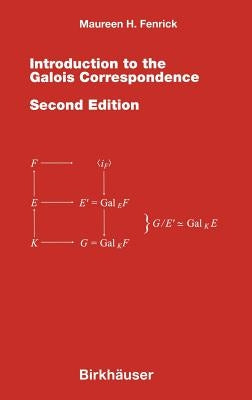1
/
of
1
Birkhauser
Introduction to the Galois Correspondence
Introduction to the Galois Correspondence
Regular price
$83.99 USD
Regular price
Sale price
$83.99 USD
Shipping calculated at checkout.
Quantity
Couldn't load pickup availability
In this presentation of the Galois correspondence, modern theories of groups and fields are used to study problems, some of which date back to the ancient Greeks. The techniques used to solve these problems, rather than the solutions themselves, are of primary importance. The ancient Greeks were concerned with constructibility problems. For example, they tried to determine if it was possible, using straightedge and compass alone, to perform any of the following tasks? (1) Double an arbitrary cube; in particular, construct a cube with volume twice that of the unit cube. (2) Trisect an arbitrary angle. (3) Square an arbitrary circle; in particular, construct a square with area 1r. (4) Construct a regular polygon with n sides for n > 2. If we define a real number c to be constructible if, and only if, the point (c, 0) can be constructed starting with the points (0,0) and (1,0), then we may show that the set of constructible numbers is a subfield of the field R of real numbers containing the field Q of rational numbers. Such a subfield is called an intermediate field of Rover Q. We may thus gain insight into the constructibility problems by studying intermediate fields of Rover Q. In chapter 4 we will show that (1) through (3) are not possible and we will determine necessary and sufficient conditions that the integer n must satisfy in order that a regular polygon with n sides be constructible.
Author: Maureen H. Fenrick
Publisher: Birkhauser
Published: 12/18/1998
Pages: 244
Binding Type: Hardcover
Weight: 1.19lbs
Size: 9.21h x 6.14w x 0.63d
ISBN: 9780817640262
Author: Maureen H. Fenrick
Publisher: Birkhauser
Published: 12/18/1998
Pages: 244
Binding Type: Hardcover
Weight: 1.19lbs
Size: 9.21h x 6.14w x 0.63d
ISBN: 9780817640262
This title is not returnable
Share


